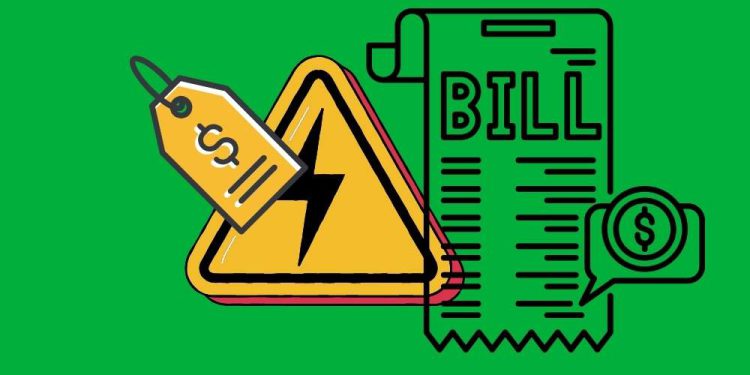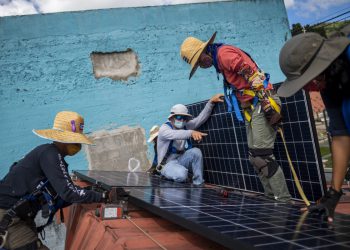Wholesale electricity prices across Australia have dropped sharply, yet many households haven’t seen their power bills follow. The latest data from the Australian Energy Market Operator (AEMO) shows average wholesale prices fell by almost 30% in the September quarter of 2025, driven by record levels of renewable generation, particularly rooftop solar and wind. But while the cost of generating electricity has fallen, the price households pay remains stubbornly high.
The disconnect comes from how the electricity market works. The wholesale rate is what retailers pay to purchase energy before selling it on to consumers. It makes up only around a third of a typical household bill. The rest is absorbed by network charges, environmental levies, retailer costs, and daily supply fees. All of these components don’t move in step with the market.
For homeowners with solar panels, the result is a puzzling contradiction: their systems are helping drive prices down nationally, yet the savings aren’t reflected in their own bills.
Understanding why those savings stall is key to making solar work harder at home, and to finding practical ways to benefit from a grid that’s becoming cleaner, cheaper, and more unpredictable.
What’s actually happened to electricity prices
Over the past year, wholesale electricity prices in the National Electricity Market (NEM) have fallen to levels not seen since before the 2022 energy crisis. According to AEMO’s quarterly report, the average price across the eastern states dropped to $87 per megawatt-hour in Q3 2025, down 27% from the same period a year earlier and nearly 40% lower than the previous quarter.
Quarterly Wholesale Electricity Prices (Q3 2024 vs Q3 2025)
| State / Region | Q3 2024 (A$/MWh) | Q3 2025 (A$/MWh) | Change % |
| Queensland | 100 | 72 | -28% |
| New South Wales | 120 | 90 | -25% |
| Victoria | 104 | 77 | -26% |
| South Australia | 157 | 104 | -34% |
| Tasmania | 111 | 91 | -18% |
| NEM Average | 119 | 87 | -27% |
This has been driven by record renewable output. Rooftop solar generation increased by around 11%, while wind generation climbed by 16%. Together, they have pushed down daytime prices and reduced the amount of gas generation needed to meet demand. Queensland (QLD) and South Australia (SA) recorded the largest declines, with averages around $72 and $104 per megawatt-hour, respectively. Even with a one-day price spike in SA caused by transmission constraints, the overall trend shows that renewables are steadily undercutting fossil fuel generation on price.
For homeowners, these figures highlight two realities: solar and wind are successfully lowering the cost of electricity at the wholesale level, and household solar systems are part of that momentum. Every rooftop panel contributes to the national surplus of cheap daytime power, but those gains still face bottlenecks before they reach the average household bill.
The missing link between wholesale and retail
Wholesale electricity may have become cheaper, but that’s only one part of what determines your power bill. Households buy electricity at retail rates, which are the prices charged by energy providers that include several other layers of cost beyond generation. Wholesale energy typically accounts for around a third of a household’s bill. The rest is made up of network and transmission charges, environmental levies, retail operating costs, and daily supply fees.
This means a 30% fall in wholesale prices translates to only a small shift in your final bill, if any. For instance, even if the wholesale portion drops from $120 to $85 per megawatt-hour, the remaining two-thirds of your bill (the part tied to poles, wires, metering, and retail margins), remains largely unchanged. Those fixed costs are regulated or contracted well in advance and don’t fluctuate with the market each quarter.
The situation becomes more complicated by the steady rise in fixed supply charges. In some states, these fees have increased over the past year, offsetting much of the benefit of cheaper wholesale energy. As a result, while the grid is paying less to produce power, households are still paying roughly the same to access it.
Why the network part of your bill is going up
The biggest factor keeping electricity bills high is the cost of maintaining and upgrading the poles, wires, and substations that deliver power to homes. These network and transmission costs account for almost 40% of a typical household bill, and they’re rising. Energy networks are regulated monopolies, which means their pricing is approved by the Australian Energy Regulator to ensure reliability and long-term investment. When infrastructure ages, population grows, or new renewable projects need to be connected, these costs are passed on to consumers through higher network tariffs.
At the same time, the way homeowners use the grid is changing. As more households install rooftop solar, daytime demand on the network has dropped sharply, especially during sunny hours. However, the grid still needs to be maintained to deliver power at night, during cloudy weather, or in areas with limited solar capacity. With fewer daytime users sharing those costs, network operators spread them over a smaller base, effectively pushing unit prices higher.
In 2025, several network businesses across New South Wales (NSW), QLD, and SA reported increases in residential network charges of between 5 and 10%. That rise alone can easily outweigh any savings created by lower wholesale prices, which helps explain why bills remain steady even as the cost of generating electricity falls.
Feed-in tariffs are falling for the same reason
For many households, lower wholesale prices don’t just affect what they pay for grid power, they also influence what they earn from exporting electricity. Feed-in Tariffs (FiTs), the rates retailers pay for surplus solar sent back to the grid, generally track wholesale trends. When daytime wholesale prices fall due to abundant solar generation, FiTs decline as well.
The national grid is now experiencing frequent periods of excess supply in the middle of the day. In some states, wholesale prices regularly approach zero or even go negative when rooftop solar floods the market. Retailers adjust their FiTs accordingly, which means the value of exported solar energy has steadily fallen over the past few years. Those that once earned substantial credits for daytime exports now find those payments much smaller, particularly in spring and summer when generation peaks.
This highlights a fundamental change in how solar value is measured. The greatest savings no longer come from selling energy back to the grid but from using it directly at home. In this new market, self-consumption is worth far more than exporting every extra kilowatt-hour.
Retailers are cautious to pass on cuts
Even with cheaper wholesale electricity, retailers rarely adjust household prices straight away. Most energy retailers buy their electricity through long-term contracts or hedge agreements rather than directly from the spot market. These contracts are designed to smooth out volatility, protecting retailers from sudden spikes but also delaying the benefits of falling prices.
When wholesale costs decline, it can take months for those savings to filter through to retail pricing. Retailers may also use this period to rebuild financial margins eroded during the 2022-2023 energy crisis, when price caps and emergency measures squeezed profitability. In other cases, government price regulation and fixed-term plans limit how quickly new rates can be introduced.
The result is a slower, less visible response at the household level. Some providers have begun offering limited discounts or variable time-of-use tariffs to reflect daytime oversupply, but across most standard plans, price reductions remain modest. Until existing contracts expire and the market fully resets, the average customer will continue paying roughly the same, even as the cost of producing electricity continues to fall.
How solar households can take advantage anyway
Even though retail prices haven’t fallen in step with wholesale costs, solar homeowners can still reduce their bills by adjusting how they use energy. Here’s how:
- Prioritise self-consumption: Use your solar power as it’s generated instead of exporting it. Run energy-intensive appliances, such as washing machines, dishwashers, and pool pumps, during daylight hours when your panels are producing the most.
- Shift daily routines: Small behavioural changes can make a big difference. Charge devices, cool or heat your home, and cook meals during the middle of the day to rely less on grid power in the evening.
- Switch to a time-of-use tariff: Many energy retailers now offer pricing plans with cheaper rates during periods of high solar output. If you have a smart meter, use it to monitor when electricity is cheapest and plan usage around those windows.
- Add or optimise battery storage: Store excess solar energy during the day and use it at night when tariffs are highest. Even modest battery systems can significantly reduce peak-time grid dependence.
- Review your plan regularly: Retail offers change frequently. Comparing plans and monitoring your solar output ensures you’re on a tariff that rewards your generation and usage patterns.
The bigger picture – why this is still good news
Falling wholesale prices signal that the energy transition in the country is working. Cheaper renewable generation, driven by record levels of rooftop solar and wind, is changing how electricity is produced and priced. While the full benefit hasn’t reached household bills yet, the downward pressure on market costs is a sign that clean energy is steadily displacing fossil fuels and stabilising supply.
For homeowners, this matters beyond today’s bills. As the share of renewables continues to grow, daytime power will remain cheap and abundant, and new tariff structures will emerge to reflect that. Utilities are already testing models that offer free or heavily discounted daytime electricity to encourage customers to use more when solar output peaks. Over time, this could make flexible, solar-aligned households the clear financial winners.
It’s also a reminder that individual systems contribute to collective results. Every rooftop panel adds to the national pool of low-cost energy, pushing wholesale prices down and reducing emissions at scale. Even if the savings don’t immediately show up on the next statement, solar households are helping build the conditions for a cheaper, cleaner grid that’s beginning to deliver on its promise.
Wholesale electricity prices have fallen sharply, but the way bills are structured means most households won’t feel that relief right away. Network costs, fixed supply charges, and retail contracts all act as buffers between the market and the meter. For solar homeowners, that makes smart energy use more important than ever. Using more of your own solar power, storing excess energy, and aligning consumption with cheaper daytime rates remain the most effective ways to reduce costs. The market is moving toward cleaner, lower-cost generation — the challenge now is learning how to make that shift work in your favour.
Energy Matters has been in the solar industry since 2005 and has helped over 40,000 Australian households in their journey to energy independence.
Complete our quick Solar Quote Quiz to receive up to 3 FREE solar quotes from trusted local installers – it’ll only take you a few minutes and is completely obligation-free.
















